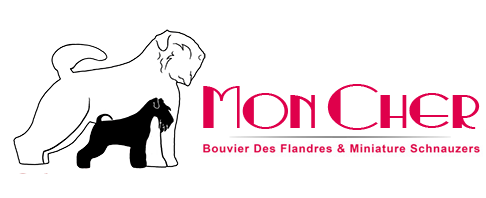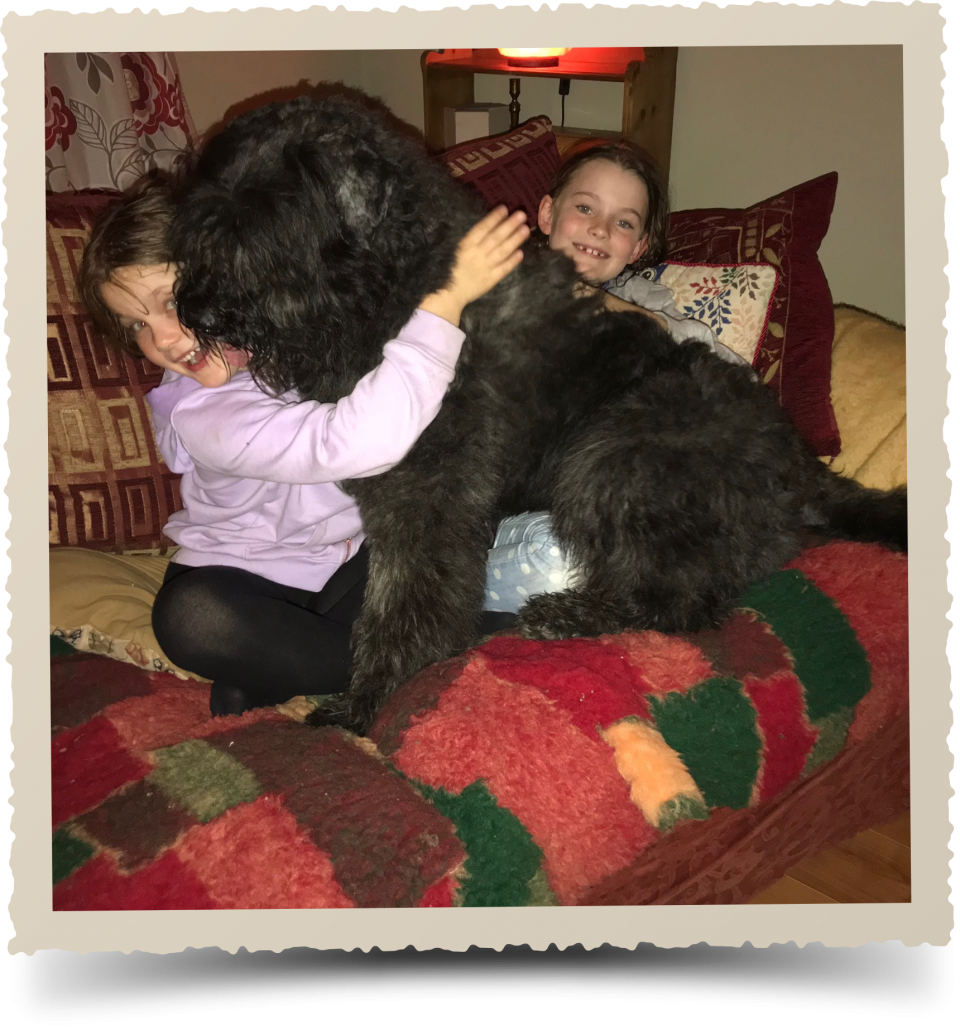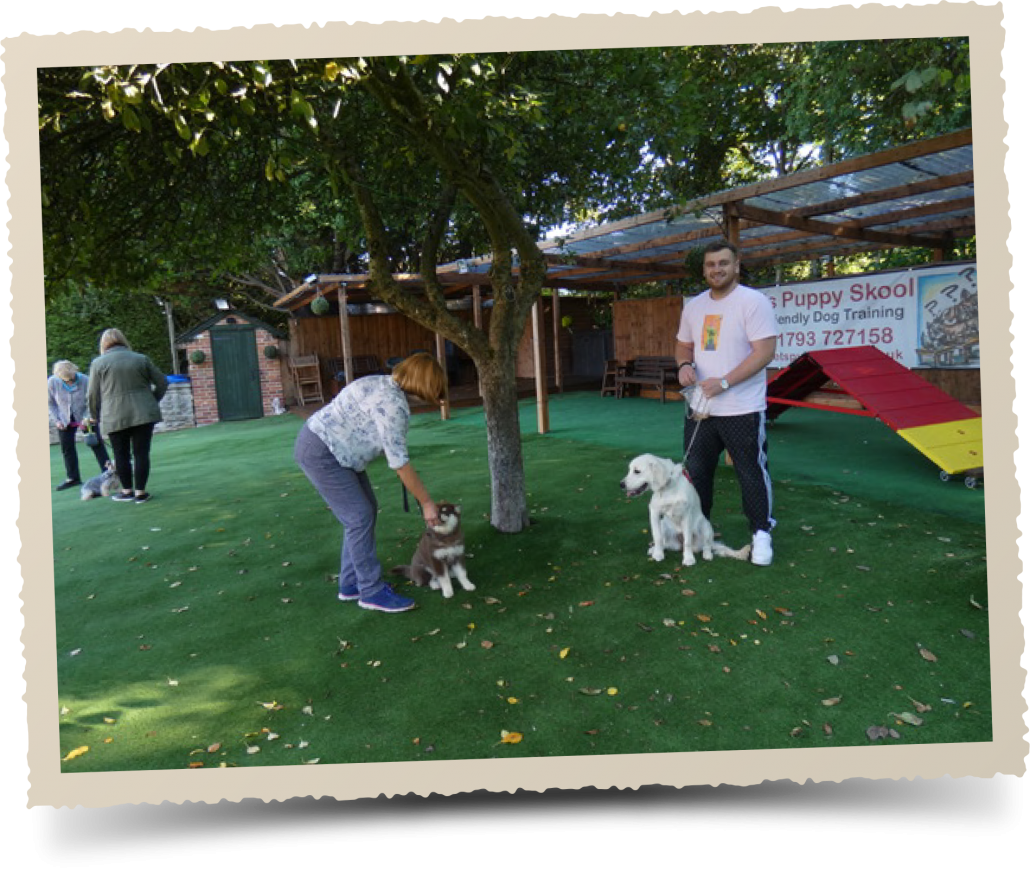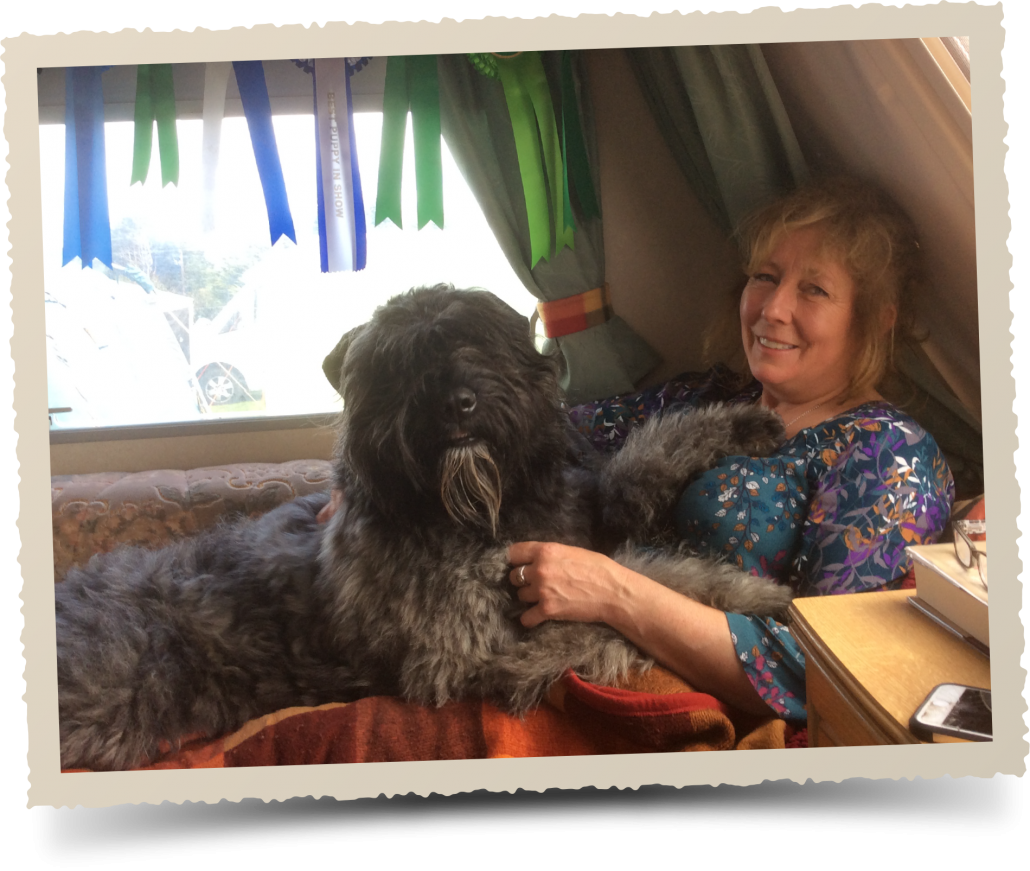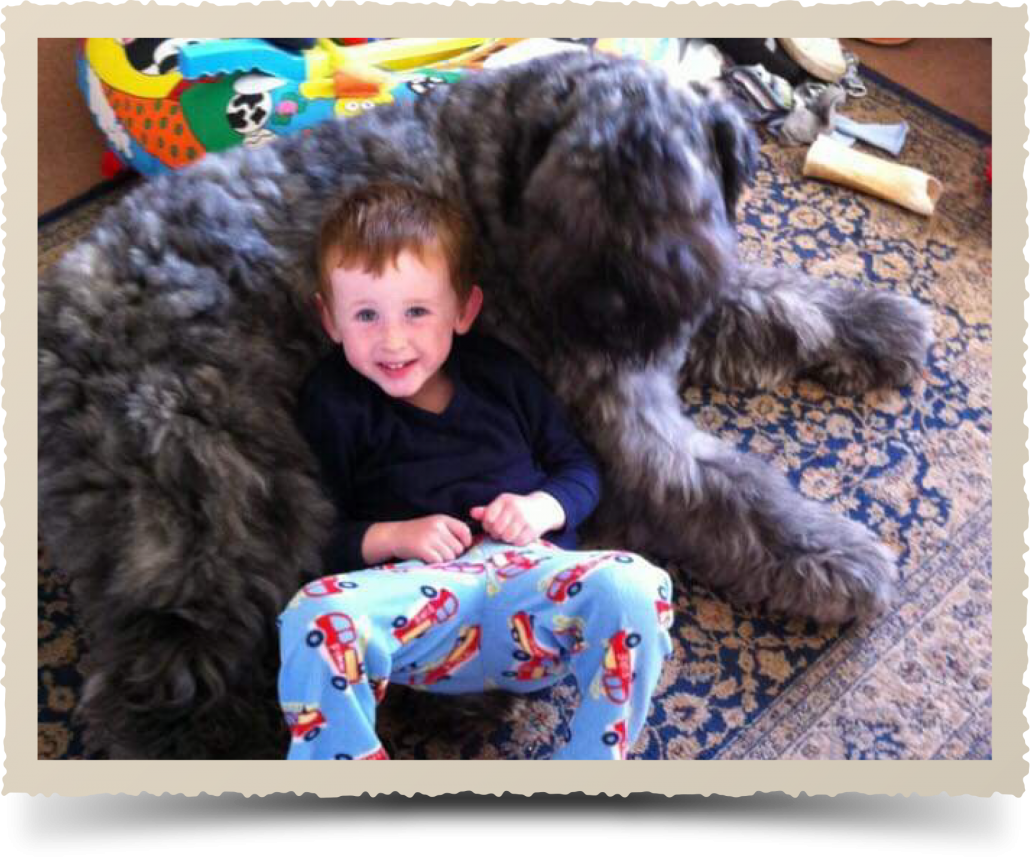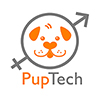House Training
When you collect your puppy at @ 8 weeks it will already be accustomed to using puppy pads for toileting and I’d recommend you continue to use puppy pads as part of your housetraining routine. On your puppies initial arrival in your home have your puppy area ready and prepared with crate, water dish, and puppy pad area. Introduce your puppy to this area straight away, you will most likely find your puppy is ready to relieve itself after its journey and will prefer to use the puppy pads if made available.
(Crate training is separately discussed in its own section )
As your puppy settles in after a few days you can gradually move the puppy pad area towards the back door / exit that you plan to use for your puppy.
Your puppy will want to relieve itself immediately on waking and after eating a meal. These are the times you need to be ready to take your puppy outside / to its toileting area without delay.
If you see your puppy circling and sniffing the floor this is often a sign your puppy is ready to relieve itself. When your puppy goes outside for toileting, please stay with it (don’t just put it outside and close the door). When your puppy relieves itself give lots and lots of enthusiastic praise. Many people have a command they use when they would like their puppy to relieve itself i.e. ” Be a good dog” or “go wee, wee”. Your puppy will quickly learn what this means. A young puppy has a very small bladder and only a little bowel and bladder control so please don’t reprimand your puppy for peeing /pooing in the house. This would be as unkind as scolding a baby for filling its nappy and may actually hamper the housetraining process if your puppy learns to associate toileting with its owners anger. Your puppy will quickly learn to be housetrained, especially in the summer months when it is easy to simply leave the back door open, however, whatever time of year, puppies do want to be clean if given the opportunity and you should expect your puppy to be fully housetrained by 4 or 5 months of age. If you have a fully housetrained adult dog which suddenly fails to be clean indoors please don’t scold. Chances are your dog is already mortified by what it has done and it is almost certainly not something it chose to do from naughtiness. Instead consider what might be wrong:
- Has your dog been confined indoors for an unusually long time?
- Have there been upheavals / stress in the house such as new people or new dogs? A house move? a bitch in season?
- Is your dog well? is it peeing more often than normal ? is this a symptom of a urinary infection ? Diabetes ? Have you changed your dogs diet ? Has it eaten something strange ? Has it got a tummy upset? Pancreatitis?
- How old is your dog? Oldies often need much more frequent “toilet breaks”
- Is your bitch spayed? Spaying can lead to hormonal bladder weakness / incontinence . This can be treated by your vet. If you plan to spay your bitch please discuss the Ovarian Sparing Spay with your vet as this avoids the many health problems caused by the conventional full spay which leaves a bitch with no ability to produce essential hormones.
Lead Training
Your puppy will be accustomed to wearing a soft puppy collar from birth and should happily accept its first “Proper Collar”. I like to train my puppies on a soft adjustable “Half Check” collar as this provides gentle control;
Never ever leave a collar on an unsupervised puppy. I have heard too many horror stories of young puppies catching their collar on a branch / fence/ crate and strangling themselves to death. Collars and leads are for training and outings.
Lead training can start as soon as you bring your puppy home and should be a fun activity. Initial enticing your puppy to follow you round the kitchen table is a great start. Most puppies soon learn to follow a favourite toy / treat and this is the first step. Dragging a puppy just results in an uncooperative puppy who associates a collar and lead with bad experiences. Once you have your puppy happily following beside you (without any pressure on the lead) the distances can be extended to up and down the hall / round the garden / up and down the drive.
Remember your puppy will soon tire and should never be walking distances before 6 months of age so keep your little training sessions Short and Sweet. Twice round the table with lots of fun, verbal encouragement and praise is much better than a half hour session of battling with an unhappy resistant puppy.
The main object of your efforts is to have a happy puppy who wants to walk beside you without any pressure on its lead, listening to your voice commands. Your lead should be viewed as your “Emergency Handbrake” and nothing else. If you teach your puppy the habit of a tight lead you will find you end up with an unpleasant battle of strength as you pull your dog and your dog resists by pulling back.
Never under estimate the power of voice and particularly tone of voice. Dogs quickly learn verbal commands and much has to do with the tone in which you deliver your commands. If you drone in a monotone at your dog, both for praise and for command, it will mean nothing. Praise and encouragement should be delivered in a light happy enthusiastic tone and this is where the much maligned “squeaky voice” comes into play. Anyone who has visited a training class or dog show will probably have left with the opinion that they are populated by eccentric childless spinsters who talk to their dogs like babies. But there is method in that madness – my dogs practically jump for joy if I praise them in my “special voice” and would have the same response if I recited the shipping forecast at them in the same voice.
Training Classes
At 12 weeks of age your puppy should have completed its initial course of vaccinations and be ready to attend puppy class. This is an essential education for any puppy as it teaches them to socialise and mix politely with other dogs and people. On your first visit to a class please don’t go with expectations of leaving with a perfectly trained puppy. Your first few visits should consist of meeting and playing nicely with other puppies and being passed around lots of people who will all undoubtedly want a puppy cuddle. This provides the foundations for a people friendly, happy and confident dog and the importance of your puppy having a lovely happy fun time shouldn’t be underestimated. As your puppy gains confidence you will progress to walking around the hall on a lead and the simple obedience exercises of sit / stay / come. Go armed with lots of training treats, a sense of humour and a large dose of patience. This is where you will also have the opportunity to meet lots of people who converse in that silly squeaky voice and you’ll realise you’re far from alone. Out and About Your puppy should not be taken for long walks until it is much much older, however, outings to different places are an important part of the education process. Once initial vaccinations are completed a full puppy social calendar is a must. This can consist of a walk around your local pet store / the local market / the supermarket forecourt / friends homes/ the school run. These are important formative experiences for your puppy. Your puppy will by now be happily walking on its lead so again go armed with lots of treats, your happy squeaky voice and the determination to teach your puppy what fun it can be. I personally don’t like public dog parks. Although in principal they seem like a great idea, they are a situation over which you have no control and you are dependent on all dog owners having well mannered, obedient and properly socialised dogs. It only takes one unfriendly /aggressive dog to frighten your puppy and it can be left with a lifelong fear and anxiety.
Travelling in the Car
Most puppies travel very well in the car if used to it from an early age. Occasionally some suffer from car sickness. The best method to teach your puppy to travel happily is lots of regular short trips. I like to travel my puppies in a crate where they are safe and secure. You can provide them with their favourite toys and make it a fun experience. Should your puppy suffer from travel sickness sometimes simply covering the crate with a rug can help. A ginger nut biscuit before the journey can also assist, but lots and lots of little trips should soon have your puppy happily jumping into the car for its next trip out.
Puppies and Children
Never Ever leave a puppy/ dog and young children unsupervised. Your puppy might not have experienced children yet in its short life and it is important that a puppy has the opportunity to meet children as soon as possible. This should be done calmly, quietly and be carefully supervised. Some puppies can find these small high pitched 2 legged little creatures quite peculiar and terrifying so you must make first introductions as peaceful and pleasant as possible. Don’t allow enthusiastic children to crowd around a puppy as this can be very intimidating. Neither children or puppies are born with the knowledge of how to behave properly and it is your responsibility to teach them. I like to have the children seated on the floor (where no one can fall or be dropped) and let the puppy approach them to play with some toys and have a cuddle. Very soon they will be the best of friends, but always remember you must always be present to prevent ear pulling / tail pulling / puppies chewing body parts with little needle teeth/ over boisterous rough and tumble. Please instruct children to keep their voice and their hands low and quiet, the combination of high pitched over excited children flapping their hands around and an equally overexcited puppy is an invitation for accidents to happen.
A puppy will soon be exhausted by the excitement of romping with its new playmates and should be allowed to escape to its bed / crate for a sleep. An important lesson to teach children is to have respect for the puppy/dogs crate /bed and never disturb a sleeping puppy/dog.
Countryside and Livestock
At some point in time you will probably visit the countryside with your dog and probably encounter livestock. You may already live in the country. An absolutely essential and potentially lifesaving lesson your puppy must be taught is to ignore livestock (Sheep, Cows, Horses, Deer, Hens).
A farmer is legally entitled to shoot any dog on sight if it is off lead in a field with his livestock (irrespective of whether the dog is actually worrying livestock or just sniffing in the hedgerows). If this happens there is no excuse, no second chance and nobody’s fault but yours.
Not only will you have seen your beloved dog shot dead, you may also have a bill of thousands of pounds for damage done to sheep / aborted lambs / panicked and stampeding cattle etc.
Your dog should always be on a lead in farming areas. The primitive instincts to chase and hunt can override the very best obedience training and once your dog has learnt the fun to be had chasing those big white fluffy bleating things it is a lifetime habit that cannot be unlearned.
For your own safety please exercise caution near cattle. A public footpath may well run through a field stocked with cattle, but that does not mean it is safe. Young cattle are large, curious, boisterous creatures and cows with calves at foot can be protective and aggressive, particularly towards the perceived threat presented by a dog. Dog walkers have been killed by cattle so my advice is don’t walk your dog amongst herds of cattle. The same caution should be exercised in our National parks. Although you are welcome to explore in these vast open areas of Fell, Moor, Hill and Forest these are also agricultural areas where farmers run their business of rearing Sheep, Cattle, Deer and Ponies. Your dog should always be on a lead where there is a chance you may encounter livestock. Just because you have the freedom and right to roam does not mean your dog has.
Please remember to “Poop Scoop” in the countryside, just as you would at home. The countryside has become the playground of many and we still have the responsibility to keep it clean and tidy for all users. Canine faeces carries a bacteria responsible for causing abortion in cattle so please always clean up after your dog.
